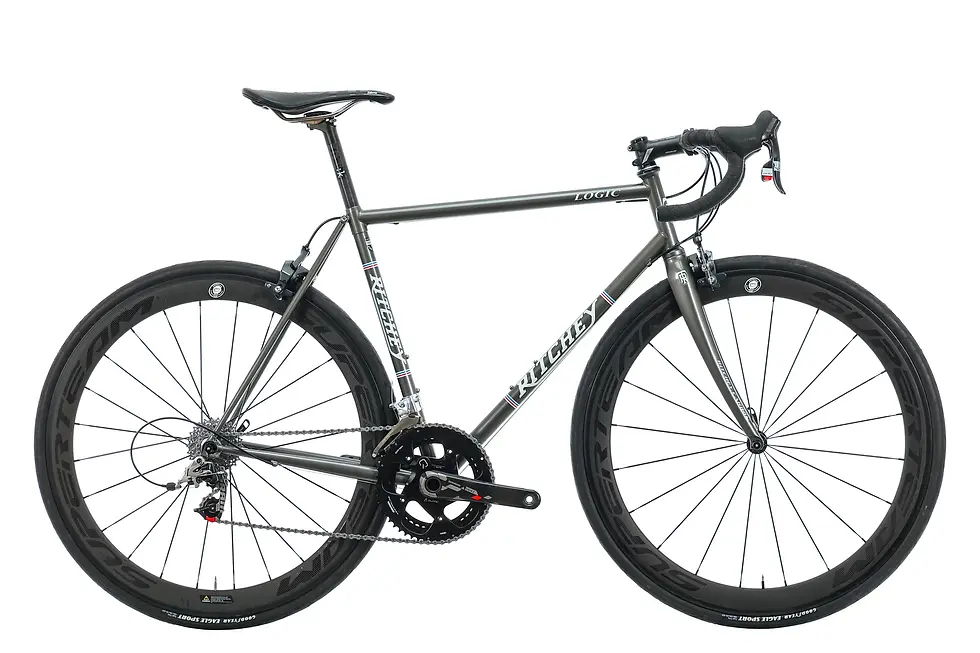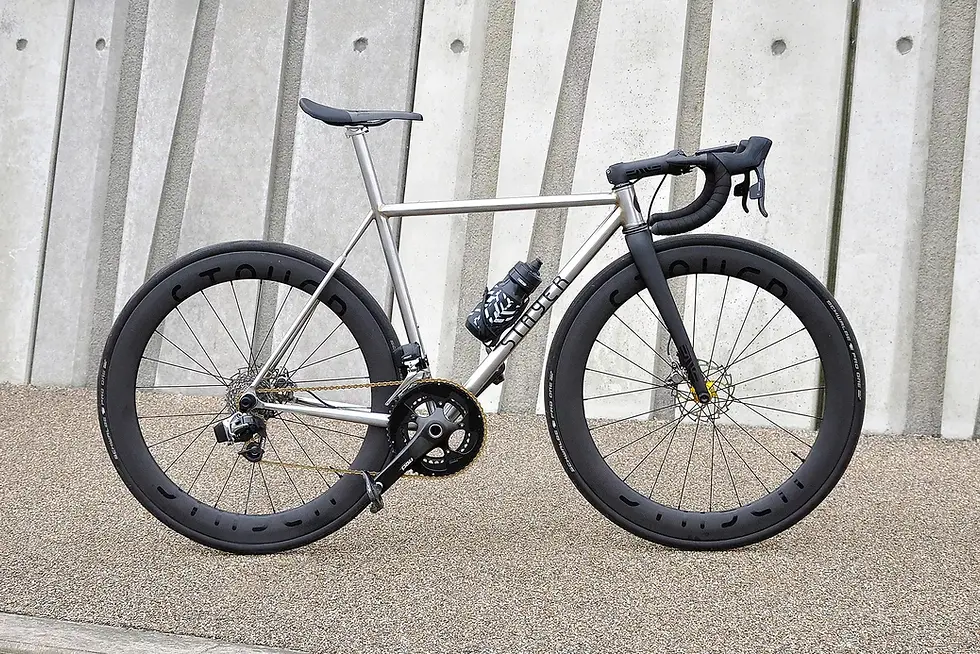Which frame material should I choose for my next bike?
- Rusty Cole
- Nov 8, 2023
- 4 min read
So you've saved up those all important pennies and its time to go shopping for your next steed. But which one is the right one for you needs? Choosing the right frame material depends on your riding style, budget, and preferences. If you prioritize lightweight and performance, carbon fiber might be your top choice. For those seeking a durable and comfortable ride, titanium or steel could be more suitable. Aluminium frames are ideal for budget-conscious cyclists who value stiffness and responsiveness. Ultimately, the choice of frame material should align with your cycling goals and individual needs.

Below is our personal take on the latest trends in the trade. Although this isn't exhaustive in detail it should give you enough ammunition to arm yourself with when you face to face with the all important bike salesman. Don't be fooled, sales operate on commission too. So do your own research, stick to you decision, stand firm and don't be sold last years stock that happens to be gathering dust in the local bike shop even if its in your size!
1. Steel Frames:

Steel has been a classic choice for frame construction, known for its durability and timeless aesthetics. Steel frames offer excellent longevity and comfort due to their natural shock-absorbing properties. However, they tend to be heavier than other materials, and without proper care, they can rust in wet conditions.
Pros:
Durability: Steel is known for its robustness and longevity. Steel frames can withstand a lot of wear and tear, making them ideal for touring and commuting.
Comfort: Steel frames have a natural dampening effect that can provide a comfortable ride by absorbing road vibrations.
Classic Aesthetics: Many cyclists appreciate the timeless look of steel frames and their fillet-brazed or lugged construction.
Cons:
Weight: Steel frames tend to be heavier compared to other modern materials, which can affect climbing and acceleration.
Rust: Without proper care, steel frames are susceptible to rust, especially in wet and corrosive environments.
Stiffness: Steel frames may not offer the same level of stiffness as some other materials, which can impact power transfer.
2. Aluminium Frames:
Aluminium frames are prized for their lightweight properties and affordability. They provide a stiff and responsive ride, making them a popular choice for entry-level and budget-conscious cyclists. However, aluminium frames can result in a harsher ride due to their stiffness and can be more prone to fatigue and cracking over time.
Pros:
Lightweight: Aluminium is significantly lighter than steel, making bikes with aluminium frames easier to handle and accelerate.
Affordability: Aluminium frames are often more budget-friendly compared to other materials.
Stiffness: Aluminium provides excellent stiffness, which enhances power transfer and responsiveness.
Cons:
Harsh Ride: Aluminium frames can transmit road vibrations directly to the rider, leading to a less comfortable ride.
Durability: While aluminium is corrosion-resistant, it is more prone to fatigue and can crack over time.
Aesthetics: Some cyclists may not appreciate the aesthetics of aluminium frames compared to classic steel.
3. Titanium Frames:

Titanium frames offer strength, durability, and corrosion resistance. They are lightweight like aluminium but maintain the comfort of steel due to their natural compliance. These frames are known for their longevity, but they come at a premium price and require welding expertise for repairs.
Pros:
Strength and Durability: Titanium is incredibly strong, and its frames can last a lifetime without rusting or corroding.
Lightweight: Titanium frames are lighter than steel and can compete with aluminium in terms of weight.
Smooth Ride: Titanium's natural compliance results in a comfortable and smooth ride quality.
Cons:
Cost: Titanium frames tend to be expensive due to the material's rarity and the difficulty of working with it.
Welding Expertise: Welding titanium requires specialized skills, which can make repairs more challenging.
Limited Aesthetics: Titanium frames often have a more understated appearance, which may not appeal to those seeking flashier designs.
4. Carbon Fiber Frames:

Carbon fiber frames have revolutionized the cycling industry with their exceptional lightweight characteristics and stiffness. They offer the advantage of customization for aerodynamic performance. However, they are the most expensive option and can be challenging to repair if damaged.
Pros:
Ultralight: Carbon fiber frames are incredibly lightweight, making them ideal for racing and climbing.
Stiffness: Carbon fiber provides excellent stiffness, translating to efficient power transfer.
Customization: Carbon frames allow for intricate design and aerodynamic features, enhancing performance.
Cons:
Cost: Carbon fiber frames are among the most expensive in the market.
Repair-ability: Carbon frames can be difficult to repair in case of damage.
Vulnerability to Impact: Carbon can be vulnerable to impacts and may develop hidden damage over time.
How they Rank?:
It's challenging to definitively rank these materials, as the choice depends on personal preferences, riding style, and budget. However, if we were to consider general performance and characteristics, the ranking might look like this:
Carbon Fiber: Offers the best balance of lightweight, stiffness, and customization options but comes at a higher cost.
Titanium: Provides strength, durability, and a smooth ride, making it an excellent choice for many cyclists.
Aluminium: Offers a budget-friendly option with good stiffness but may be less comfortable.
Steel: Known for its durability and classic aesthetics, but it's heavier and can be susceptible to rust.
Remember that these rankings can vary depending on individual preferences, and it's essential to test ride different frames to find the one that suits your riding style and needs. Ultimately Rusty always has a split decision to make with ease bike he owns, call it the head or heart moment. What you want Vs what you actually need is never the same. A lot of us will have to consider the financial impact of buying a new bike and whilst others may be fortunate enough not to worries about this: one thing they both have in common is the love of two wheels and the wind in your hair (if you still have some). That feeling of freedom can be gained one a steed costing £1500 as much as a second hand beast on Ebay for £100, it all just depends on your perspective.
Stay safe and keep rolling






Comments